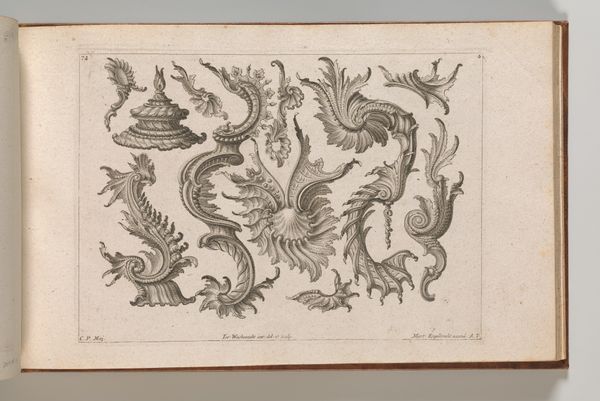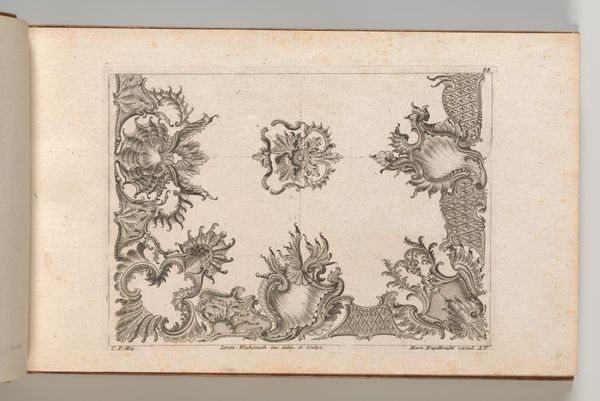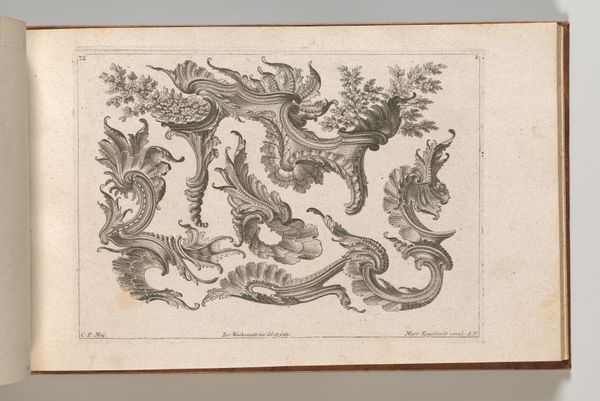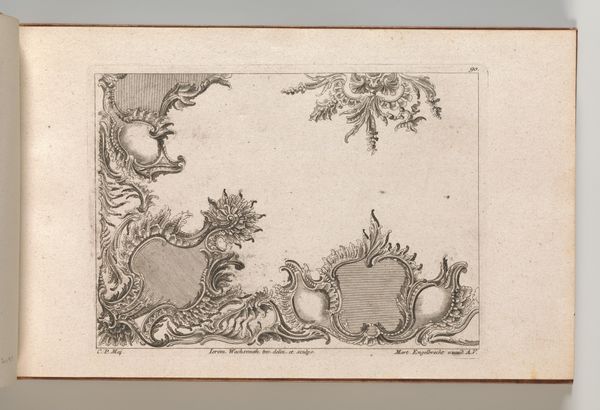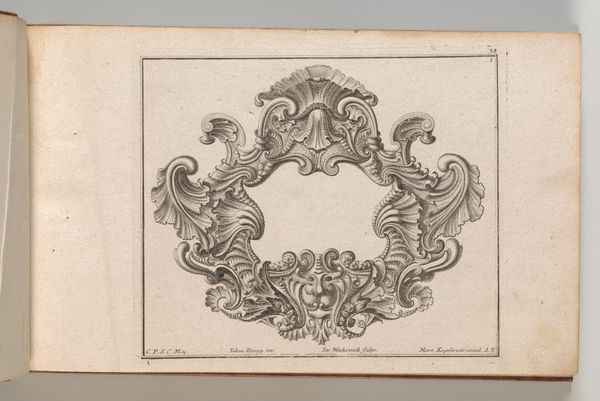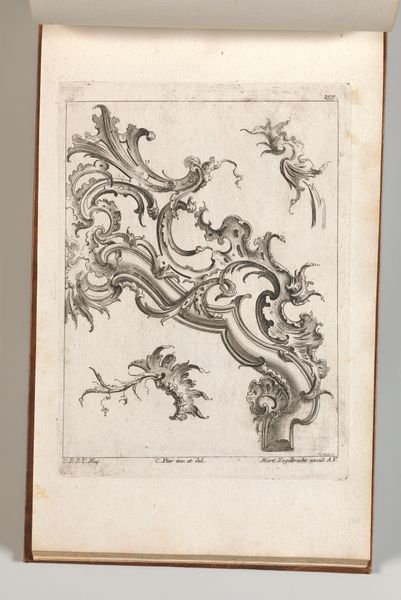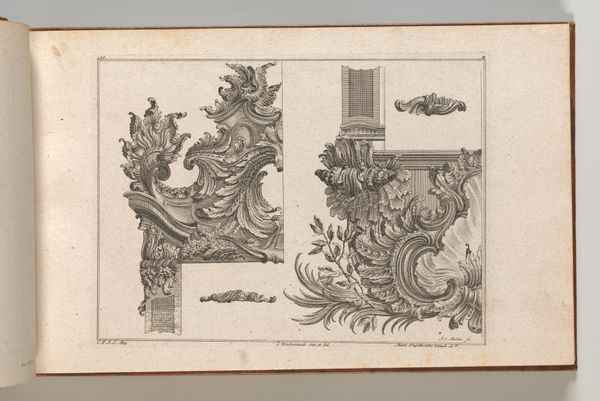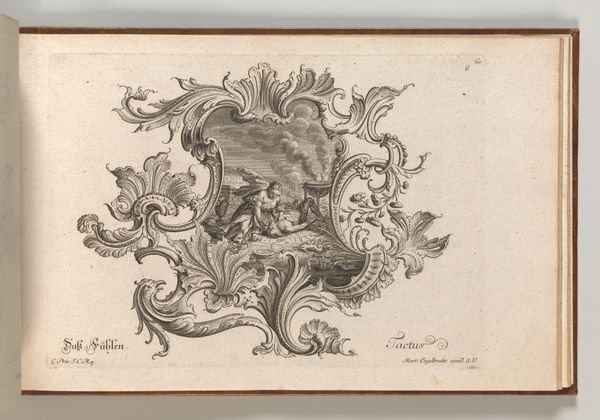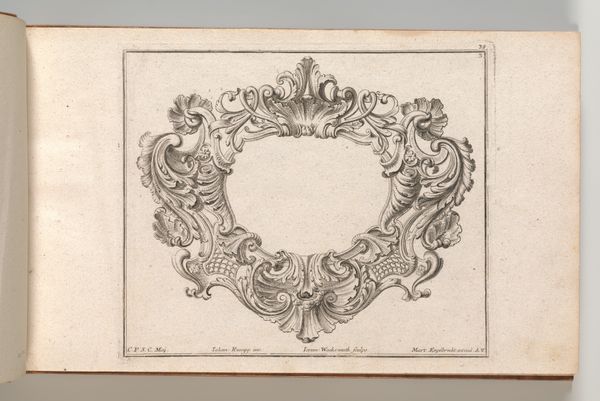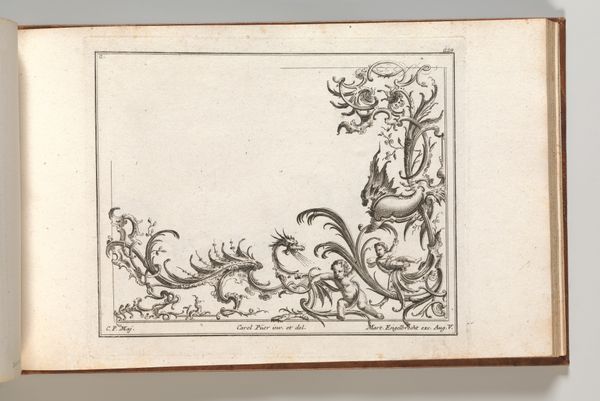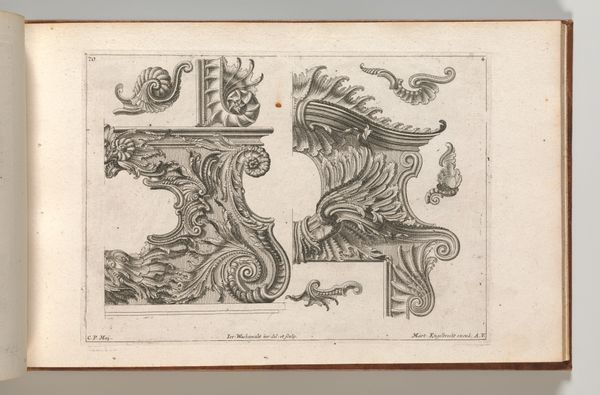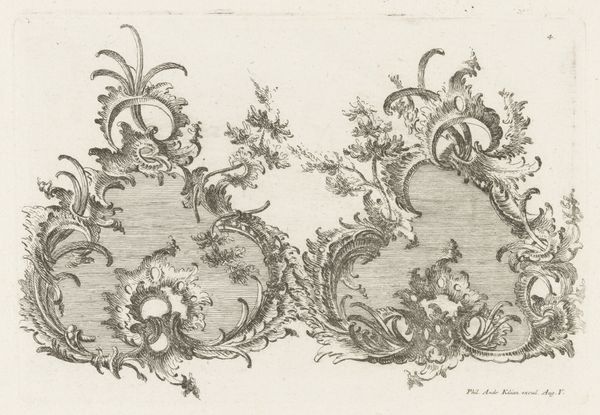
Design for a Ceiling Decoration, Plate 3 from 'Unterschiedliche neu inventierte Deken oder Plafond' 1745 - 1755
0:00
0:00
drawing, print, etching, ink
#
drawing
# print
#
etching
#
ink
#
decorative-art
#
rococo
Dimensions: Overall: 8 7/16 × 13 3/4 in. (21.5 × 35 cm)
Copyright: Public Domain
Editor: Here we have Jeremias Wachsmuth’s "Design for a Ceiling Decoration," an etching in ink from around 1745-1755. The swirling, delicate lines are really captivating! What strikes me most is how it uses empty space. How do you interpret this design in relation to its historical context? Curator: Well, its emptiness IS its statement. Consider where this design would exist: opulent homes, projecting power. Rococo, after all, wasn't merely ornamentation. It was deeply enmeshed with displaying social status. The excess suggested leisure, wealth. But this specific design offers a framed absence. Editor: So, the open space… Curator: The void implies a performative aspect. Think of it: what imagery would patrons fill it with? Family crests? Triumphal scenes? By selling 'design,' artists like Wachsmuth ceded some creative control to the buying elites. This act redefined both the production and reception of art, right? It was savvy from a business perspective. Editor: Absolutely, almost a collaborative creation, even across time. Was there resistance to this delegation of the artistic process? Curator: Certainly, some. Academies stressed the artist’s sole genius. However, designs like this catered to a burgeoning market. Prints allowed for wider circulation of styles, influencing taste even beyond elite circles. Wachsmuth essentially democratized aspiration while reinforcing the existing hierarchy. A fascinating tension. Editor: So it's less about the visual flourish of the rococo, and more about the social performance enabled by it? Curator: Exactly! By looking at the intended function – decoration intended for powerful spaces – and how Wachsmuth was part of facilitating that, we can see it was an active participant in building those power structures, both reinforcing existing class structures, and changing them by mass producing styles that democratize art styles and change our expectations of decoration. Editor: That's really fascinating. I hadn't considered the economic implications of leaving the center blank. Thanks, that gives me a lot to think about! Curator: Likewise. Examining designs highlights the complex relationship between art, social mobility, and power. A very valuable perspective for thinking about later developments.
Comments
No comments
Be the first to comment and join the conversation on the ultimate creative platform.
